Ball valves are widely used for their reliability, but they come with some drawbacks. These include limited precision in flow control, the potential for wear and tear in high-cycle applications, and issues like cavitation and erosion in extreme environments. When paired with an electric actuator or as part of an automated ball valve system, the initial cost and maintenance requirements can be significant. Actuated ball valves and ball valve actuators improve performance but may present challenges in bulkier setups or high-demand systems. To mitigate these disadvantages, selecting high-quality materials, regular maintenance, and exploring alternatives like globe or butterfly valves for precise control can be effective solutions.
Introduction
Ball valves are among the most widely used components in fluid control systems, offering simplicity, reliability, and efficiency in regulating flow. Found in industries ranging from oil and gas to water treatment, their versatility makes them a popular choice for various applications. However, like any engineering solution, ball valves are not without their limitations. Understanding the disadvantages of these valves is crucial for making informed decisions, especially when selecting the right component for specific operational needs. This article explores the potential drawbacks of ball valves, helping you evaluate whether this type of valve is the best fit for your system or if alternatives might offer a better solution.
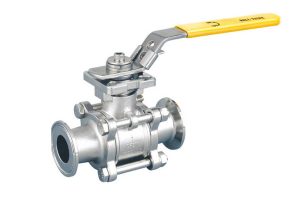
What is a Ball Valve?
Definition and basic working principle of a ball valve.
A ball valve is a flow control device that uses a hollow, rotating ball with a hole through its center to regulate the flow of fluid or gas. When the ball’s hole aligns with the pipeline, the valve opens fully, allowing unrestricted flow. Rotating the ball 90 degrees blocks the flow entirely, as the solid part of the ball seals the passage. This simple yet effective design makes ball valves ideal for quick shut-off and on-off applications, ensuring reliable sealing and minimal leakage.
Key features and advantages of using ball valves.
Ball valves are highly valued for their durability, efficiency, and versatility across a wide range of applications. Their key features include a simple design, fast on-off operation, and a tight seal that minimizes leakage. With the ability to handle high-pressure and high-temperature conditions, they are well-suited for demanding environments. Additionally, ball valves are low maintenance, resistant to corrosion, and compatible with both manual and automated systems, making them a reliable choice for industries such as oil and gas, chemical processing, and water treatment.
Common variants, including the ball valve with actuator and automated ball valve.
Ball valves come in various designs to cater to specific operational needs. Common variants include the ball valve with actuator and the automated ball valve, both engineered for enhanced control and efficiency. Ball valves with actuators integrate mechanical or electric actuation for precise operation, making them suitable for systems requiring remote control. Automated ball valves, equipped with electric or pneumatic actuators, provide seamless integration into fully automated processes, ensuring consistent performance in applications like industrial automation, oil and gas systems, and water management projects. These advanced options combine the reliability of traditional ball valves with cutting-edge functionality.
The Disadvantages of Ball Valves
-
Limited Precision for Flow Control
Explanation of why standard ball valves might not be ideal for precise throttling applications.
Standard ball valves are not well-suited for precise throttling applications due to their simple design and flow control mechanism. The round orifice and full-port construction are optimized for quick on-off operation rather than fine adjustments. When partially opened, the flow can become turbulent or unpredictable, making it challenging to maintain consistent control over smaller increments. Additionally, prolonged use in throttling positions can lead to uneven wear on the ball and seats, reducing the valve’s overall lifespan and reliability in such applications.
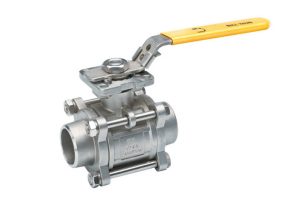
Comparison with actuated ball valves for better control.
Actuated ball valves offer a significant advantage over standard ball valves when it comes to control and precision. While standard ball valves are limited to manual adjustments, actuated ball valves use electric, pneumatic, or hydraulic actuators to deliver automated and precise flow regulation. This capability ensures consistent performance, especially in applications requiring fine-tuned control, such as industrial automation or high-pressure fluid systems. By integrating advanced control technologies, actuated ball valves minimize human error, optimize efficiency, and extend the operational range beyond the limitations of manual ball valves.
-
Potential Wear and Tear in High-Cycle Applications
How repeated actuation can lead to wear on components over time.
Frequent actuation of ball valves subjects their components to continuous mechanical stress, particularly the ball, stem, and sealing seats. Over time, this repeated motion can lead to wear and tear, reducing the effectiveness of the valve’s sealing capability and causing potential leakage. The friction generated during each cycle can degrade materials, especially under high-pressure or abrasive fluid conditions, ultimately impacting the valve’s performance and lifespan. Proper material selection and regular maintenance are essential to mitigate these effects and ensure long-term reliability.
Challenges faced even when using ball valve actuators.
While ball valve actuators enhance precision and automation, they introduce certain challenges. High initial costs and added operational complexity can be a barrier, particularly for smaller systems. Additionally, actuators require proper calibration, regular maintenance, and a reliable power source, whether electric, pneumatic, or hydraulic, to function effectively. Over time, components like seals, gears, and control circuits are susceptible to wear or malfunction, potentially leading to downtime and increased repair expenses. These factors must be carefully managed to ensure optimal performance and long-term value.

-
Size and Weight Considerations in Large Applications
Discuss how larger ball valves can become bulky and harder to manage.
Larger ball valves, while essential for high-capacity applications, often present challenges due to their substantial weight and size. Their bulkiness can complicate handling during transportation and installation, often requiring specialized equipment or multiple personnel. Additionally, mounting and aligning these valves can be labor-intensive, especially in confined or elevated spaces. The increased weight also puts extra strain on supporting structures and may necessitate reinforced piping systems. Operationally, manual adjustments become more difficult, emphasizing the need for actuators or advanced controls to ensure smooth functionality.
Impact on installations, especially for a ball valve with electric actuator.
Ball valves with electric actuators significantly impact installation requirements by introducing additional space and power considerations. The electric actuator adds to the overall size, making it crucial to assess adequate clearance in tight installations. Furthermore, a reliable power supply must be established, often requiring additional wiring and junction boxes, which can increase installation complexity and time. Proper alignment and secure mounting are also essential to ensure efficient operation, and these added factors make precise planning critical to the success of such setups.
-
Susceptibility to Cavitation and Erosion
Why ball valves might struggle in high-pressure or abrasive environments.
Ball valves may face significant challenges in high-pressure or abrasive environments due to the intense mechanical demands placed on their components. The constant exposure to high pressures or abrasive media can accelerate wear on the ball, seats, and seals, compromising their ability to maintain a reliable shutoff. Achieving effective sealing becomes more difficult, especially under conditions that cause deformation or erosion of the sealing surfaces. Over time, these factors can lead to reduced performance, increased leakage risks, and a shorter operational lifespan, requiring advanced materials and frequent maintenance to mitigate these effects.

Challenges in automated ball valve systems operating under extreme conditions.
Automated ball valve systems in extreme conditions face considerable challenges due to temperature fluctuations, which can affect material integrity and sealing efficiency. Intense heat or sub-zero temperatures may cause expansion, contraction, or brittleness in components, leading to compromised durability. The reliability of actuators is also tested under such conditions, as electronic or pneumatic elements might struggle with freezing, overheating, or pressure variations. These factors demand advanced engineering, including the use of specialized materials and high-precision actuators, to ensure long-term functionality and system stability.
- Cost and Maintenance of Actuators
Additional costs when using a ball valve with actuator or electric automation.
Integrating an actuator or electric automation with a ball valve introduces notable additional costs. The actuator itself significantly increases upfront expenses, as it often requires advanced control systems and compatibility features. Installation demands, such as wiring, mounting brackets, and ensuring proper alignment, further add to the financial burden. Ongoing maintenance also becomes a critical consideration, with routine inspections, part replacements, and potential software updates necessary to sustain reliable operation. These cumulative costs necessitate careful budgeting to maximize the system’s value and efficiency.
Maintenance challenges for ball valve actuators in demanding settings.
Ball valve actuators operating in demanding settings encounter significant maintenance challenges due to excessive wear and tear from continuous operation under tough conditions. Environmental factors such as high humidity, corrosive substances, or abrasive particles can degrade components, leading to frequent malfunctions or reduced efficiency. Additionally, these systems often require specialized expertise for diagnostics, repairs, and calibration, as improper handling can compromise actuator precision and reliability. Such complexities underscore the importance of proactive servicing and the use of robust, high-quality materials to ensure sustained performance.
Mitigating the Disadvantages of Ball Valves
Tips for selecting the right type, such as automated ball valves, to address specific challenges.
When selecting the right type of ball valve, such as automated ball valves, it is essential to consider the specific requirements of the application, including flow control precision, pressure ranges, and media compatibility. Evaluate environmental conditions, such as temperature extremes or corrosive substances, to ensure the materials can withstand potential wear or chemical degradation. Additionally, factor in budget constraints, balancing upfront costs with long-term savings offered by reliable performance and reduced maintenance needs. Opting for valves with advanced features or specialized coatings can further address unique challenges and enhance system efficiency.
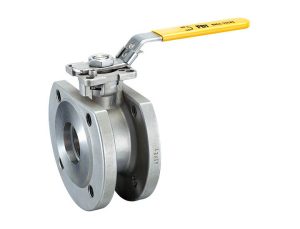
Importance of regular maintenance and high-quality materials.
Regular maintenance and the use of high-quality materials are critical for ensuring the durability and efficiency of ball valve systems. Routine servicing prevents wear-related failures, maintains sealing integrity, and detects potential issues before they escalate into costly repairs. High-grade materials, designed to withstand extreme conditions and corrosive environments, minimize the risk of component degradation and ensure reliable performance. Together, these practices significantly extend system lifespan, optimize operational efficiency, and reduce long-term costs by avoiding unplanned downtimes and frequent replacements.
Applications that May Not Be Suitable for Ball Valves
Outline of industries or systems where ball valves may not perform optimally.
Ball valves may not perform optimally in industries or systems that require precise flow control, such as pharmaceuticals or chemical processing, where throttling accuracy is critical. They can also face challenges in applications with significant pressure drops, as their design may not provide the same efficiency as other valve types under such conditions. Additionally, handling abrasive media, like slurries or particulates, can accelerate wear on valve components, compromising sealing and reliability. These limitations make it crucial to assess application needs before selecting a ball valve for demanding environments.
Examples contrasting their use in basic vs. advanced setups.
Ball valves in basic setups, such as domestic plumbing or low-pressure water systems, are valued for their simplicity, cost-effectiveness, and straightforward on-off control. These systems typically demand minimal functionality, making manual ball valves a practical choice. By contrast, advanced setups like industrial automation or oil and gas applications require sophisticated solutions, such as automated ball valves with precise actuation mechanisms, remote operation capabilities, and compatibility with high pressures or aggressive media. These setups prioritize advanced functionality and robust performance to meet the complexity and stringent requirements of critical operations.
Alternatives to Ball Valves for Certain Applications
Exploration of other valve types like butterfly or globe valves for precise flow control.
Butterfly and globe valves are preferred options for applications requiring precise flow control, where ball valves may not deliver the necessary accuracy. Globe valves, with their linear motion and throttling capability, excel in regulating flow rates, making them ideal for industries like chemical processing or power generation. Similarly, butterfly valves offer smooth modulation for large-diameter applications with low-pressure conditions, such as water treatment systems. Their design allows for efficiency and reduced weight, enabling enhanced performance in specialized setups where precision and reliability are paramount.
Scenarios where actuated ball valves might offer a competitive advantage.
Actuated ball valves provide a competitive advantage in scenarios where automation and precision are essential, such as in process industries, oil and gas operations, or water management systems. Their capability for remote operation allows for centralized control, minimizing manual intervention and ensuring safety in hazardous or hard-to-reach environments. Additionally, their robust designs enable reliable performance under high-pressure or high-temperature conditions, enhancing system efficiency while reducing downtime. These features make them an indispensable component in modern industrial applications demanding both reliability and advanced functionality.
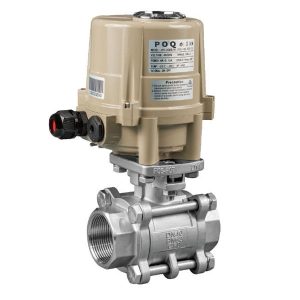
FAQs
When should I use a ball valve with electric actuator?
A ball valve with an electric actuator is ideal for applications requiring automation, precise control, and reliable performance in challenging environments. These are commonly used in industries like chemical processing, oil and gas, or water treatment, where centralized systems demand consistent flow regulation. Their ability to operate remotely ensures safety in hazardous or hard-to-access locations, while their precision and programmability make them a valuable choice for processes requiring meticulous control and efficiency.
Are actuated ball valves more durable than standard ball valves?
Actuated ball valves can be more durable than standard ball valves in certain applications due to their automated operation, which eliminates the manual turning that can cause wear over time. This automation not only enhances longevity but also ensures consistent performance by reducing human error. Their robust designs often make them better suited for demanding environments involving high pressures, temperatures, or corrosive media, where reliability is critical. However, their durability ultimately depends on the application and maintenance practices compared to traditional manually operated ball valves.
What industries benefit most from automated ball valves?
Industries such as oil and gas, chemical processing, water treatment, and manufacturing benefit significantly from automated ball valves due to their precision, efficiency, and reliability. These valves are essential for managing critical processes, ensuring accurate flow control, and maintaining safety under high-pressure or high-temperature conditions. Their automation allows for seamless integration into centralized systems, reducing manual intervention and improving operational efficiency in environments where precision and performance are non-negotiable.
How do I choose between a ball valve and other valve types?
Choosing between a ball valve and other valve types depends on your specific application requirements. Ball valves are ideal for quick shut-off and high-pressure applications, offering durability and minimal leakage. However, if precise flow control is essential, like in throttling operations, globe or butterfly valves might be more suitable due to their design. Additionally, consider the pressure and temperature conditions, as well as the maintenance demands, to ensure the valve aligns with the system’s operational needs and long-term performance expectations.
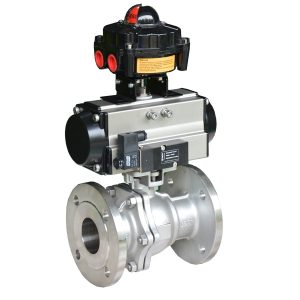
Conclusion
In conclusion, while ball valves are known for their reliability and versatility, they do have notable disadvantages. Issues such as limited precision in flow control, susceptibility to wear in high-cycle operations, and challenges in handling extreme conditions like cavitation or erosion can impact their performance. Additionally, when integrated with an electric actuator or configured as an automated ball valve, costs and maintenance efforts may increase. Bulkier designs, especially in a ball valve with actuator setups, can also pose challenges in certain applications. However, selecting the right actuated ball valve for your needs, prioritizing high-quality materials, and maintaining regular upkeep can help mitigate these limitations. For precision control or demanding environments, exploring alternatives like globe or butterfly valves might be a wise choice. Ultimately, understanding your system’s specific requirements is key to ensuring optimal performance and long-term efficiency.

